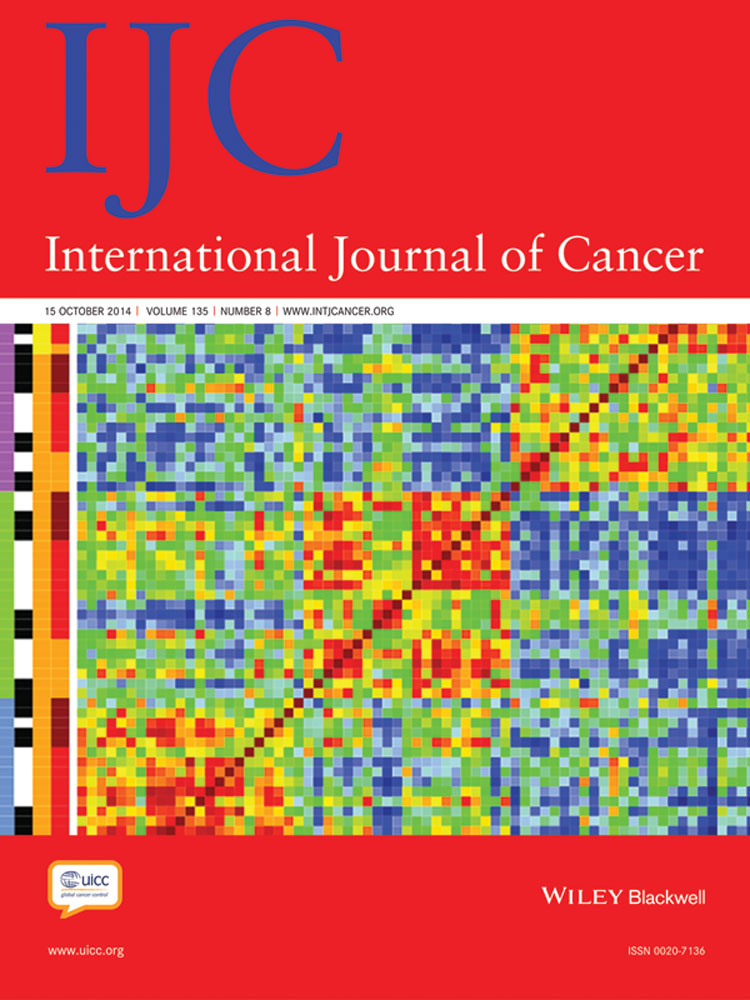Calcium intake and colorectal cancer risk: Dose–response meta-analysis of prospective observational studies
Abstract
Mechanistic and epidemiologic studies provide considerable evidence for a protective association between calcium intake and incident colorectal cancer (CRC). While the relationship has not been substantiated by short-duration randomized controlled trials (RCTs) of CRC, trials do show a benefit on adenomas, a precursor to CRC. To address some of this inconsistency, we conducted dose–response meta-analyses by sources of calcium intake, based on prospective observational studies published up to December 2013 identified from PubMed, Embase, and BIOSIS. Summary relative risks (RRs) and 95% confidence intervals (CIs) were calculated using a random-effects model. For total calcium intake, each 300 mg/day increase was associated with an approximately 8% reduced risk of CRC (summary RR = 0.92, 95% CI = 0.89–0.95, I2 = 47%, 15 studies with 12,305 cases, intake = 250–1,900 mg/day, follow-up = 3.3–16 years). While the risk decreased less steeply in higher range of total calcium intake (Pnon-linearity = 0.04), the degree of curvature was mild and statistical significance of non-linearity was sensitive to one study. For supplementary calcium, each 300 mg/day increase was associated with an approximately 9% reduced risk of CRC (summary RR = 0.91, 95% CI = 0.86–0.98, I2 = 67%, six studies with 8,839 cases, intake = 0–1,150 mg/day, follow-up = 5–10 years). The test for non-linearity was not statistically significant (Pnon-linearity = 0.11). In conclusion, both dietary and supplementary calcium intake may continue to decrease CRC risk beyond 1,000 mg/day. Calcium supplements and non-dairy products fortified with calcium may serve as additional targets in the prevention of CRC. RCTs of calcium supplements with at least 10 years of follow-up are warranted to confirm a benefit of calcium supplements on CRC risk.
Abstract
What's New?
Evidence suggests that milk intake may decrease the risk of colorectal cancer (CRC). In this meta-analysis, the authors found that calcium is responsible for this protective effect, and that the dose-response curve is virtually linear within the observed range. They also compared dietary with supplemental calcium intake, and found that both sources provide similar benefits. These results suggest that even people who are lactose intolerant or consume low levels of dairy products may still reduce their risk of CRC by taking calcium in the form of supplements and non-dairy foods.




